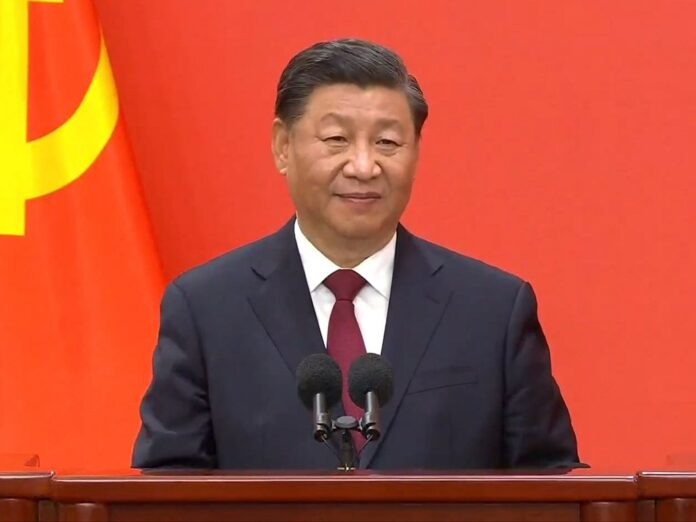Massive state fund aims to counter Western restrictions and boost China’s semiconductor capabilities
China is intensifying its efforts to dominate advanced technologies by creating its largest-ever semiconductor state investment fund. Valued at $47.5 billion, this initiative comes as the US imposes restrictions on American chips and technology exports to curb Beijing’s ambitions.
The fund, supported by six major state-owned banks, signifies Chinese leader Xi Jinping’s commitment to positioning China as a tech superpower. With the “Made in China 2025” roadmap, Beijing aims for global leadership in artificial intelligence (AI), 5G wireless, and quantum computing.
Embed from Getty ImagesThe latest fund marks the third phase of the China Integrated Circuit Industry Investment Fund, commonly known as the “Big Fund.” Established in Beijing, this phase follows two previous investments: the first in 2014 with $19.2 billion and the second in 2019 with $28.2 billion. These phases aimed to elevate China’s semiconductor industry to international standards by 2030, focusing on manufacturing, design, equipment, and materials.
Following the announcement, shares of leading Chinese chipmakers surged. Semiconductor Manufacturing International Corporation (SMIC), the world’s third-largest contract chipmaker, saw a 7% increase, while Hua Hong Semiconductor, China’s second-largest chip foundry, gained 13%.
However, the “Big Fund” has faced significant challenges. Corruption scandals have plagued the initiative, with high-profile investigations and indictments. In 2022, China’s anti-graft watchdog scrutinized the semiconductor industry, including Lu Jun, former chief executive of Sino IC Capital, who faced bribery charges.
Despite these internal issues, external pressures pose significant hurdles. In October 2022, the US introduced stringent export controls, prohibiting Chinese companies from purchasing advanced chips and chip-making equipment without a license. The Biden administration also urged allies, including the Netherlands and Japan, to implement similar restrictions.
In retaliation, Beijing imposed export controls on two critical raw materials essential for global chipmaking. This move reflects China’s strategy to bolster its semiconductor industry while countering Western sanctions.
China’s technological advancements continue to draw global attention. Last year, Huawei unveiled a smartphone powered by a 7-nanometer processor from SMIC, surprising industry experts who doubted China’s capability to produce such advanced chips amid US restrictions.
Xi Jinping remains steadfast in his vision for China’s technological self-reliance. During a meeting with Dutch Prime Minister Mark Rutte, Xi asserted that “no force can stop China’s scientific and technological development.” This statement underscores China’s determination to overcome international obstacles.
The Netherlands plays a crucial role in the semiconductor supply chain, being home to ASML, the sole manufacturer of extreme ultraviolet lithography machines necessary for producing advanced semiconductors. In January, ASML announced that the Dutch government had prohibited it from shipping certain lithography machines to China, highlighting the ongoing geopolitical tensions in the tech industry.
Analysis:
China’s substantial investment in its semiconductor industry reflects a multifaceted strategy with broad implications. This analysis delves into the political, economic, and technological dimensions of this development.
Politically, China’s investment underscores its resolve to achieve technological independence amid escalating tensions with the US. The semiconductor industry is pivotal for national security and economic stability, making it a strategic priority for Beijing. The investment also signals China’s intention to reduce reliance on Western technology and develop indigenous capabilities. This move could lead to further geopolitical frictions as the US and its allies intensify efforts to curb China’s technological advancements.
Economically, the $47.5 billion fund represents a significant commitment to bolstering China’s semiconductor industry. This investment aims to enhance domestic production capabilities, reduce dependency on foreign suppliers, and drive innovation. By improving its semiconductor infrastructure, China seeks to support various high-tech sectors, including AI, 5G, and quantum computing, which are crucial for future economic growth. The surge in stock prices of major Chinese chipmakers following the announcement indicates positive market sentiment and confidence in China’s strategic direction.
Technologically, the fund aims to address critical gaps in China’s semiconductor supply chain. The focus on manufacturing, design, equipment, and materials will help build a robust and self-sufficient industry. However, achieving technological parity with global leaders like the US and Taiwan remains challenging. The corruption scandals associated with the “Big Fund” highlight governance and transparency issues that could hinder progress. Furthermore, US export controls and restrictions from allies like the Netherlands pose significant barriers to acquiring advanced technology and expertise.
From a strategic perspective, China’s investment reflects a broader trend of state-led initiatives to secure technological leadership. The “Made in China 2025” plan outlines ambitious goals for China to become a global leader in various high-tech industries. This state-driven approach contrasts with the market-driven models prevalent in Western economies, emphasizing the role of government in steering technological development.
In conclusion, China’s $47.5 billion investment in its semiconductor industry represents a strategic effort to achieve technological self-reliance and counter Western sanctions. This development has profound political, economic, and technological implications, highlighting the ongoing global competition for technological supremacy. As China advances its semiconductor capabilities, it will face significant challenges, both internally from governance issues and externally from geopolitical tensions. However, this investment underscores China’s commitment to becoming a leading tech superpower.
